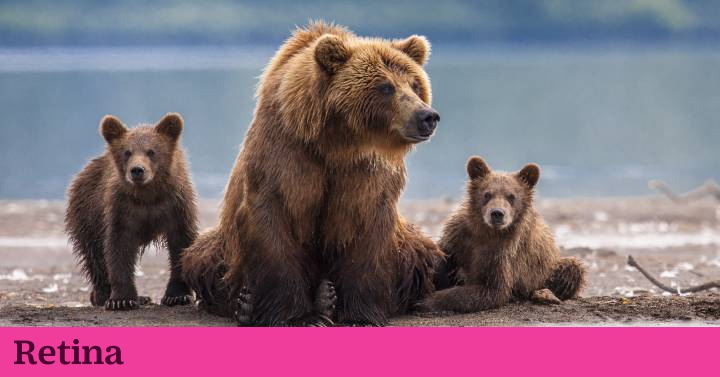FOLLOW
Follow
Melanie Clapham, a researcher at the University of Victoria (Canada), has studied grizzly bears in the wild for more than a decade.
In collaboration with several experts, Clapham has developed a new tool: it is BearID, a facial recognition software designed for this subspecies of the brown bear that lives in North America.
Those responsible for BearID assure that it will be of great help in the conservation efforts of these animals, to control their health and their location in the forests, and also to reduce the risks derived from interaction with human beings.
A further goal is to adapt this non-invasive method to make it easier for conservationists interested in other animals.
Clapham was working on projects with Chris Darimont, another Victoria University researcher in conservation science, when interest in turning to facial recognition technology emerged.
“Grizzly bears don't have unique or consistent markings on their fur;
they also suffer important variations in weight depending on the seasons or by age.
So we think that facial recognition - used mainly in humans and primates until now - could work well, ”says Clapham by phone.
A group of German scientists published in 2016 a study using similar techniques with an individual recognition rate ranging from 77% to 92% in chimpanzees.
“We met Ed Miller and Mary Nguyen, Silicon Valley-based software developers, in 2017 through WildLabs, an online portal that connects people for projects in conservation technology.
We had the advantage of having thousands of images, many of them obtained by photo-trapping - the recording by photography or video of the species in an ecosystem, ”Clapham continues.
In this way, BearID was born, a software that works with a set of deep learning algorithms.
Clapham, Miller, Nguyen and Darimont published a few days ago an article in the journal
Ecology and Evolution
about the results of the project.
The experts worked with 4,675 photographs taken at two specific locations: Knight Inlet (an area of fjords in Canada) and Katmai National Park (in Alaska).
The algorithm locates each bear's face and marks landmarks through the eyes, nose, ears, and forehead.
Then extract, code and classify these traits.
The team first trained the system with 3,740 photos;
the remaining 935 were used to verify how it worked without supervision.
The recognition rate was 84%.
Thus, the software was able to identify Dani, Lenore, Toffee, Frank and other bears that Clapham has been tracking for a long time.
Grizzly have an average lifespan of 25 years in the wild.
“One way is to install cameras in urban parts where grizzly bears prowl for food.
Based on the identification of these bears, the best intervention strategy to follow could be determined, ”says Clapham.
Dallas Smith, president of the Nanwakolas Council (a body that represents five indigenous communities in Canada) said in a statement that this technology “will help to individually identify bears and better understand their movements and interactions in our territories.
This will allow us to build better management plans around habitat protection ”.
Smith underscored the cultural importance of the grizzly bear to these communities, hence the weight of finding ways to combine technological advancements with traditional ecological methods.
The creators of BearID continue to work to increase the rate of facial recognition among these Ursids.
They admit that the number of photographs available slows down progress compared to methods used in humans, where profiles number in the millions.
However, they rely on the use of material that they have not yet used thanks to a network of video cameras installed in the last three years.
It should be noted that BearID (a project funded by the Natural Sciences and Engineering Research Council of Canada) is open source software, since the purpose is that other conservationists can modify and adapt it for facial recognition of both other species of bears and of animals also difficult to distinguish individually, as is the case of wolves and coyotes.

